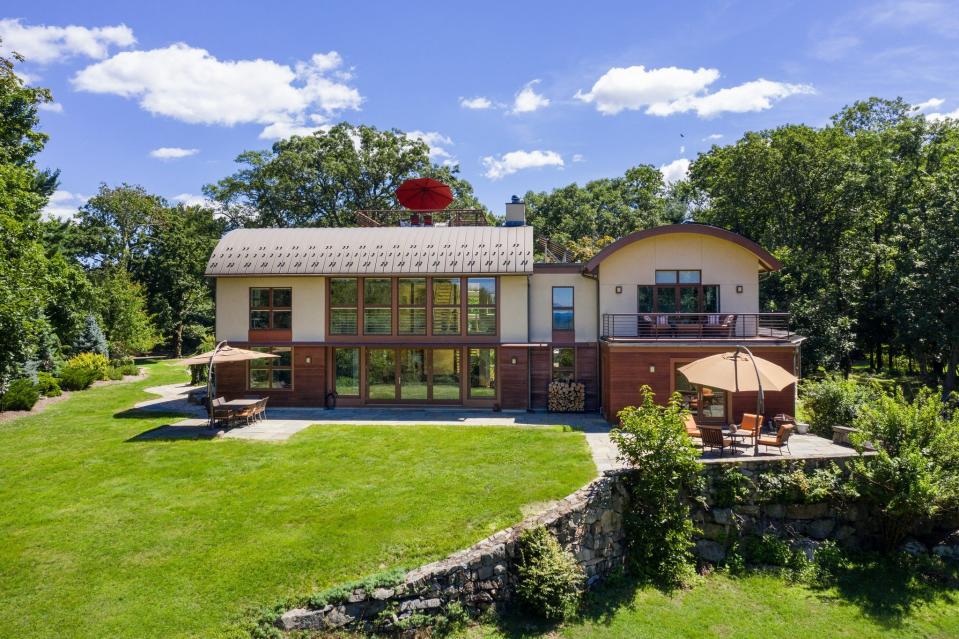Westchester should enhance its national leadership on geothermal energy | Opinion
As the United States pursues its long-term environmental goal of net-zero emissions no later than 2050, there is an opportunity for Westchester County to play a growing and vital leadership role. That opportunity focuses on the use of ground source heat pump energy – often called geothermal — an under-utilized renewable energy storage resource. Westchester has already staked out a leadership position on it, and the people of Westchester can enhance it by making geothermal energy a top priority in homes, offices, and institutions.
Ground source heat pump energy is thermal energy extracted or stored in the ground subsurface. That energy can be accessed from lot areas to provide efficient heating and cooling for nearby buildings. Its great benefit is that the stored thermal energy is reusable. Electric energy is needed to access it but at a reduced level that advances New York State’s effort to make the electric grid more sustainable.
Westchester is already a national leader in this regard. The county — with support from the New York State Energy Research and Development Authority — created in 2021 a free online tool that enables anyone to simply assess the feasibility of ground source heating and cooling for all property lots in the county. County Executive George Latimer has been a strong proponent of reducing energy use, and of this approach specifically.
The national significance of this tool — called Westchester GeoPossibilities — is that it proved that a similar, previously constructed tool created by the city of New York could be replicated for a suburban county. My consulting engineering firm was involved in the creation of both tools, and each is unique and vital in its own way. The New York City model was the pioneer and demonstrated its utility in the nation’s largest city. The Westchester model is more applicable to less densely populated areas nationwide. That’s crucial because geothermal ground source energy systems are best suited to larger lots where the energy use per acre is not as great. Even with smaller lots, a hybrid solution can be efficient.
Westchester is also home to the corporate headquarters of Dandelion Energy, the nation's leading home geothermal company. Originally conceived at Alphabet’s innovation lab and now an independent company based in Mount Kisco, it currently provides residential geothermal systems in five states: New York, Connecticut, Massachusetts, New Jersey, and Vermont. Its investors include a fund led by Bill Gates.

For individual properties, a ground source heat pump system works as follows: a series of pipes buried in vertical wells, or in some locations submerged horizontally below ground, allow fluid to be circulated to the building’s heat pump system. This system provides heated or cooled air, water, or refrigerant for the building. In winter the heat pump extracts heat from the ground, while in summer the reverse occurs: moving heat from the building into the ground.
Westchester is well suited for geothermal systems for three primary reasons:
First, because it is largely suburban, it tends to have the larger lot sizes that are especially appropriate. Those can be single-family residences with backyards, apartment or office complexes with parking lots or other open spaces, retail complexes with similar open spaces, and institutional campuses like schools, colleges, and hospitals.
Second, Westchester’s geology is beneficial — more rocky than sandy. That’s better both for the storage of energy — much as a thick cooking pot retains more heat than a thin one — and for the transfer of heat.
Third, the moratorium on new natural gas connections in Westchester is forcing property owners to consider alternatives.
There are also numerous incentives to encourage renewable energy sources like geothermal. The state of New York recently enacted a new tax credit for residential geothermal heat pump installations. It can be coupled with a 26% federal tax credit and rebates provided by Con Edison to make geothermal systems even more affordable. Sustainable Westchester is a great source of information for homeowners considering geothermal energy systems.
For all these reasons, Westchester County has enormous potential for expanding renewable energy sources through geothermal energy systems at a crucial time for the planet. In the process, Westchester can enhance its own national leadership.
In addition, one doesn’t have to be a property owner to participate. Apartment renters, office workers, and other employees in Westchester can help build the momentum by asking the property owners where they live and work to explore geothermal energy opportunities.
With the 2022 elections approaching, this is also a great time for Westchester residents to let their elected officials know that they care about the environment and ask what they are doing to make renewable energy an even higher priority locally, statewide, and nationally. The future of the planet depends on all of us.
Charles Copeland, a resident of Hastings-on-Hudson, is president and CEO of New York City-based Goldman Copeland Consulting Engineers.
This article originally appeared on Rockland/Westchester Journal News: Westchester County can be a national geothermal energy leader

